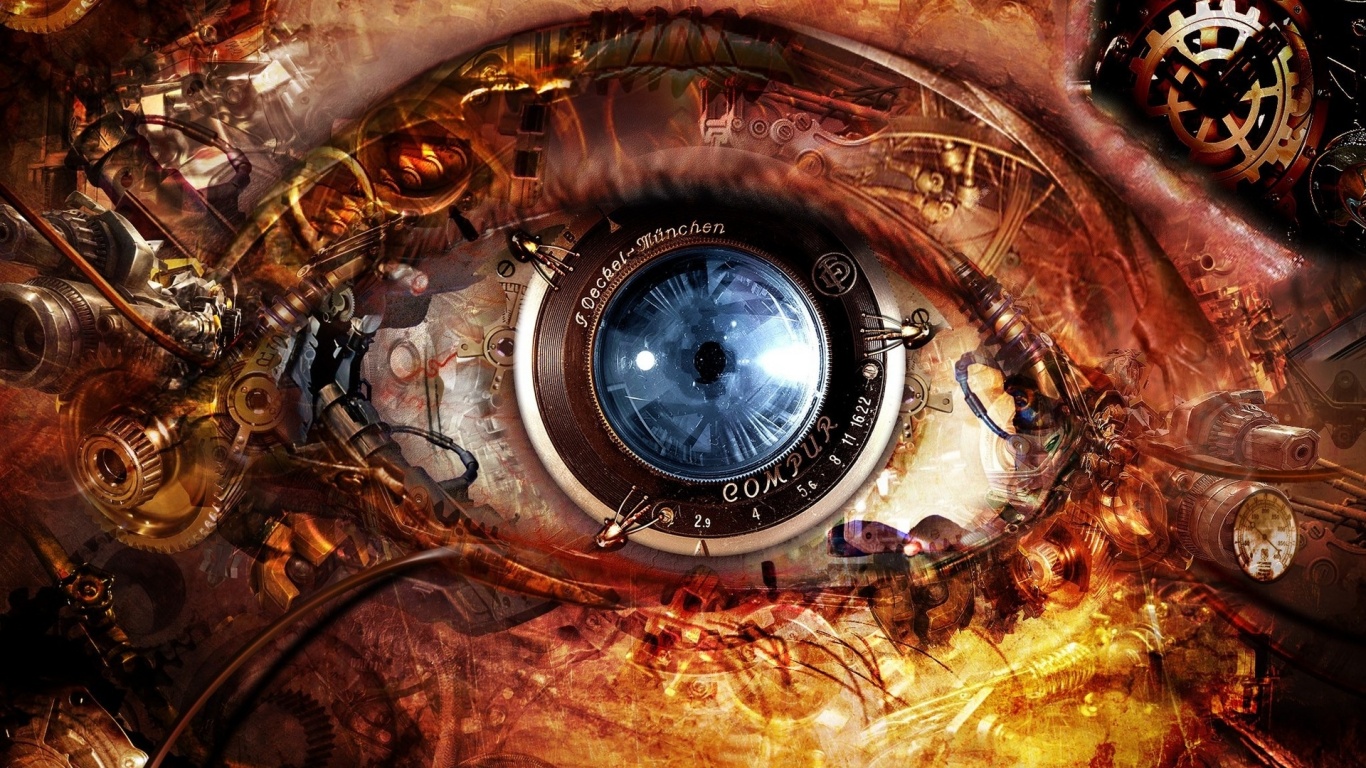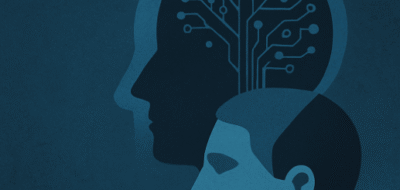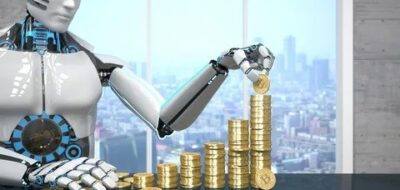Our friends and us have gone on a weekend trip into the wilderness lately, leaving behind all trappings of civilization. All worked wonderfully until our friends’ teenage son threw a fit over his smartphone which he shook anxiously, bellowing: “What is this! No Internet?!” We tried to convince him he would be fine without the web for two days. To no avail. And you know what? Whether we like it or not, he was right. After all, as the “consumer of the future”, he is the one that sets the rules of this game.
Nearly all of us today are connected to digital services. We are both the co-architects and consumers of digital reality. Technologies fascinate us, they are currently in fashion and sell well. Start-ups, digital and web apps are all trendy and cool. However, there is another face to digitization – the complex and often painful change of business organizations. What consequences of digitization should a modern company reckon with? What should it do to survive in a market swept by a digital revolution? Described below are some key elements one might want to consider in designing a digitization strategy.
The megatrend: enter generation C
A new generation is here, referred to as Gen C, with a “C” for connected. In 2020, a whole generation of people who will have spent their entire childhoods and youth in a fully digital world will come of age. The Internet, smartphones and social media are the only world they know. Their intimate familiarity with the latest technologies, their use of mobile devices for communication, their immersion in the network of family, friend and business colleague contacts substantially affects the way they consume goods and perform work.
In pondering the changes in business beyond performance indicators, one should carefully examine labor force demographics. Older generations may find it difficult to cope with digital processes and may need extra help dealing with change.
The main forces in the digital world
Digitization has reached a turning point. It is driven mainly by new consumers, new technologies and new businesses. They affect one another reinforcing all the processes involved in this megatrend in which digitization is key.
The new consumers
Members of generation C are particularly well adjusted to living in the digital world. It is natural for them to believe they will be able to stay connected indefinitely. Two features distinguish their behavior: a propensity to share their privacy with others via social media and trust in other people’s opinions. They find members of their networks more trustworthy than the messages circulated by any brand. When contemplating a change in a business model, one should ensure greater transparency in business activities, recognize grass-roots consumer movements and appreciate the importance of social media in customer relations.
The new technologies
New technologies spread ever wider continually gaining momentum. The digital revolution relies on billions of consumers having access to broadband Internet which delivers global industry content to each of them within a split second. While access is cheap across all industries, cloud computing and information processing speeds grow exponentially. With information flowing between business units, consumers and businesses grow faster. It is therefore vital to speed up business processes and decision-making within companies. To make this happen, enterprises need to foster collaboration across their branches and build cross-functional teams.
The new economy
The benefits to be derived from digitization are real. An ever broader funding stream is available for business projects that begin with building their identities based on digital technology. Investors favor technologically innovative companies whose shares fetch premium prices at stock exchanges around the world.
Transparent strategy for victory
Business success in today’s changing world belongs to leaders capable of learning from market changes. If they live up to the challenge, their companies are bound to grow and defeat competition. Investment in new technologies will inevitably produce a return. The resulting profit may exceed that of the largest of today’s enterprises. Needless to say, business digitization entails certain trade-offs. Wrong choices carry risks that are potentially enormous. The key challenge for the businesses that are out not only to weather the storm but also ride the wave of the new megatrend is to formulate a clear digitization strategy. In its development, companies should identify the benefits and opportunities that the strategy is expected to bring and define the value chain that will emerge in the process.
This precisely was the aspiration of BMW in creating its two business units for digitization. Their job was to help the company achieve specific goals, which included completing the design, transport and finishing of automotive subcomponents within six days. The new units are responsible for ensuring efficient information flows. The approach works well for companies which adopt one or two global strategic objectives. With more objectives to handle or with objectives defined independently in the company’s multiple business units around the globe, the strategy may leave processes fragmented and units proliferating. BMW has reduced its strategy to the single aim of manufacturing the best cars in the world.
The key questions that companies should answer
In its article “Five questions every digital strategy should answer” written as early as 2014, Accenture noted that every digitization strategy should be customer-centric. But what if broader questions were asked? What if a company’s macro- and micro-environments were brought into the picture along with good will and business models? The questions then might look very different:
- How will digitization influence the company’s current business model and its standing in the industry? How will digitization affect the competition?
- How does one identify significant trends in the company’s industry and beyond? How will digitization affect them?
- Which part of the company’s business model may be disrupted? What barriers may rise driven by the megatrend (digitization -> new consumers, new technology, new economy)? How can one prevent disruptions and barriers?
- What should we do to become a leader in our field? How can digitization help us achieve this goal?
Key areas affected by digitization
A successful digitization strategy will take a company down a whole new path. The company may follow the megatrend and grow in one of its three aspects: its new business model, its new operational processes and its new space.
New business model
A company may base its new business model on complete connectedness with the digital ecosystem. Nearly 80 percent of successful start-ups have chosen to rely on cutting-edge IT. An astounding 50 percent of the start-ups that became market leaders have chosen a mobile technology as their centerpiece. Another viable option is to turn the company’s product into a service. An amazing 70+ percent of the Fortune 500 companies plan to offer their products as services by 2020. One can also be radically innovative and follow the example of the likes of Xiaomi and Uber. Such companies have made it big by adopting a novel approach to doing business.
New operational processes
A company may revamp all processes to generate major savings. For instance, a strategy of producing components on a 3D printer may reduce energy consumption by an incredible 40 to 60 percent as much of its transportation and logistics will no longer be needed. Equally enormous savings may result from discontinuing the production of costly equipment prototypes. Smart manufacturing software may speed up operations and cut operating expenses. Big data analytics may enable retailers to increase their revenues by a whopping 60 percent.
New virtual space
The labor market trend of “working any time, any place” is posed to cut demand for office space by double digit percentages in the nearest future. A company’s new strategy may be to gradually increase the share of work performed remotely by online workers. Such a growing virtual space will significantly reduce the company’s overhead and even cut working time for all employees.
Centralizing independent areas of digital innovation
In the world of business, centralization is often defined as placing all processes in the hands of a company’s executives. This path has been taken by Boeing where all digital technologies are managed by a single individual who decides about the latest technologies and IT processes. In the Commonwealth Bank of Australia, centralization meant setting up a business unit in charge of IT innovation and, subsequently, all digitization processes. This doesn’t necessarily have to result in killing all grass-roots and local initiatives. Frequently, the key to success lies in managing innovations locally. Every distinct structure such as a business unit or company branch is allowed to operate with full autonomy. Its prime objective is to maximize its own value rather than perform centrally assigned tasks. Nevertheless, in doing so, the unit or branch adheres to a central strategy and plan of developing digital resources. This very approach has been adopted by the media house News Corp, which relies on innovations unrolled by its local businesses. Although locally-managed, such businesses follow a common strategy and a common digital action plan.
So this can be done. Perhaps the best way out is to centralize and adhere to a common plan with independent areas. The examples cited above show it is possible and that the results are encouraging. Note also that there is no such thing as the single best digitization strategy model. Every company needs to adjust its changes to its specific profile and resource base. Some will embrace change sooner, others later. The question is whether to rush to beat the competition or wait and see to learn from the mistakes of others.
Related articles:
– Blockchain – the ultimate financial crash
– Fall of the hierarchy. Who really rules in your company?
– End of the world we know, welcome to the digital reality
– Blockchain has a potential to upend the key pillars of our society
– The brain – the device that becomes obsolete
– Work of the future – reinventing the work
– Augmented Reality. Seeing more than just a Pokemon










TomK
I believe tht instead of the machines-taking-over-the-world vision of the future we are facing a future of unparalleled human-machine synthesis. Kind of sci-fi cyborgs
Adam T
https://singularityhub.com/2016/02/15/where-artificial-intelligence-is-now-and-whats-just-around-the-corner/ In 2011, IBM’s AI system, dubbed “Watson,” won a game of Jeopardy against the top two all-time champions. A commercial demonstration of the power of this technology. compination of unique technologies: natural language technologies, artificial intelligence, the context, the machine learning and deep learning, analytics and data and do something purposeful that ideally could be commercialized. By IBM. Next step
TomHarber
In recent years, a number of scientists, along with academics in fields such as philosophy and physics, have lent credence to the notion that machines may one day become as large as humans. Digitalization might be a key to an efficieny intrease. Nice manual indeed but there is plenty of them already. How to secure implementation? This is a key question.
TonyHor
Other organizations are also quite good in this tech. See recent Oracle papers, but this is mainly for B2B
John McLean
Nicely structured manual. One piece is missing: what about UX? Plays more critical role in digital economy nowadays. I would rather consider this as a key pillar for customer satisfaction, usability and churn. Winning a new customer is much more expensive than keeping existing one satisfied
Check Batin
Right. Nice manual. But is this sth new? It’s aready years when we know what to do. Most important is to apply all these ideas in real life. It’s all about execution
John McLean
This is an example of almost straight and immediate application https://www.theguardian.com/technology/2017/jan/15/driverless-cars-12-things-you-need-to-know
TomCat
Might not be new but I see this as a another independent point of view. I believe he’s a practitioner sharing his experiences, story structured in a condensed story-line with examples. Like this approach. Although some of important topics might be missing. At the end it’s all about implementation not state-of-the-art ideas but sth simple, executable to achieve tangible results
TommyG
Digital computing predictions, yes I read much concerning this. As I have said before, on many occasions. These predictions relate to the point at which computers will overtake the human brain in its cognitive speed. But that is all, these predictions relate to the future where computers will be able to complete more computations than a human brain, does that mean it will then have the same or more “abilities” than a human brain? I think not.
CaffD
Aplicability of AI in business is enormous. Check latest advancements on IBM Watson as a example: https://www.wired.com/2014/10/future-of-artificial-intelligence/
Karel Doomm2
With regards to latest advancements in Watson. Healthcare as it’s mentioned in this piece is a big one. However, more and more its to some real world applications. By that i mean there’s very large interest from enterprises to integrate Watson into their business. Call centres, law firm research, finacial advisor assistance. Watson has several components. Like watson explorer is a highly intelligent search engine which can search both structured and unstructured data.
There should be a few developments and use cases of real world applications around on the net which are public.
Jacek B2
Very good point
johnbuzz3
Assuming a form of artificial intelligence is created, even if it could outmatch any human at any task (etc), if it is not allowed to escape from a single computer/supercomputer/computer network and if it does not have a physical body with which it can sense and interact (sensing and speaking MAY be safe, but should be closely monitored) then it is entirely harmless due to it’s isolation. So long as it is treated with the same level of precautionary measures asfor the Ebola Virus then you can (in theory) go on developing and teaching a new species of intelligent being with all the safety and security you could wish for.
TomCat
I believe that one of the major reasons that AI attempts have not been as successful as projected is because everyone hopes to find “THE” algorithm, which “solves” the problem of intelligence. We as humans are predisposed to finding some simple principle that iteratively generates the behavior that we call intelligence. I think that this is a prejudice based upon our precepts of “computation”. Complex software is never algorithmically pure or elegant, it is lumpy, complicated, and often messy, as a result of developing richer behavior over time.
TomHarber
Many people already argued that machines in a digital trand could even come to exceed humans humans in terms of logic, emotions. Really?